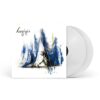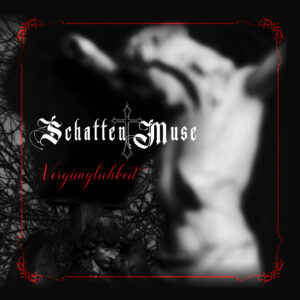Angizia – 39 Jahre für den Leierkastenmann oder Ein Stück für die Judenstadt – Limited Double Black Gatefold LP (200 copies)
€27.90
Description
Release Date: 18.02.2022
Barcode: 5902693144359
Style: Avantgarde Black Metal, Prog Rock
- New Mastering by Thomas Tannenberger (Abigor).
- Printed Lyrics + 16 pages Booklet.
- First time on vinyl.
The Circle Music proudly announces the release of Angizia’s – “39 Jahre für den Leierkastenmann oder Ein Stück für die Judenstadt” for first time on LP.
In music there have always been artists who didn’t follow the barriers. They discovered new paths and instead of following the walked pathway, they brought to the fore unprecedented melodies. One such path was opened by the Austrian ANGIZIA in the mid 90s. Their first complete album “ Die Kemenaten scharlachroter Lichter” stunned audiences and critics. Their music didn’t fit into molds and even the characterization “avant-garde black metal” may be simple enough to include their synthetic grandeur.
The Circle Music welcomes ANGIZIA to the family and announces the rerelease of “ 39 Jahre für den Leierkastenmann oder Ein Stück für die Judenstadt” (which debuted in 2001) for the first time on vinyl. We are very proud to work with a genius musician like Michael Haas and such a unique band like ANGIZIA.
Track-list:
Side A – Erster Akt: 1911-1920
- Eröffnung
- Mein Jahr in Lemberg, 1911
- Mehmet und die Zirkusstadt
- Zinnsoldaten und Kanonen, 1917
- Anastasia Spennocchi, 1920
Side B – Zweiter Akt: 1921-1933
- Der Wein der Lumpensammler, 1923
- Lied für die Armut anderer Leute
- Judenkinder oder Die Komödie vom Krieg
- Die zinnoberrote Marionette
- Unterstadt – Oberstadt – Zirkusstadt
- Die linke Hand des Musikanten
Side C – Dritter Akt: 1934-1941
- Komik und elegische Momente
- Blumen von Tschandravatii, 1938
- Eine ungelebte Stunde, 1941
- Ithzak Kaufmann und das Bindfadencello
- Der lustige Tote
- Epilog aus der Judengruft
- Mein letztes Stück
Lay-out: Bernd Grünwald
Musicians:
- Lyrics By, Music By, Vocals [Protagonist] – Michael Haas
- Accordion – Krzysztof Dobrek
- Bass – Harald Hauser, Jochen Stock
- Cello – Giuseppe Gravino
- Clarinet – Bernhard Seibt
- Drums – Alex Dostal
- Music By, Electric Guitar – Emmerich Haimer
- Painting [Paintings] – Gabriele Böck
- Piano – Mario Nentwich
- Producer – Roland Bentz
- Tuba, Trombone – Gottfried Kölbl
- Violin – Roland Bentz, Svea Juckum-Bentz
- Vocals [Bassbuffo] – Rainer Guggenberger
- Vocals [Primadonna] – Irene Denner
- Vocals [Rezitativ] – Jochen Stock
Angizia, 39 Jahre für den Leierkastenmann
A famous Queen Song chants, “It’s a kind of magic”. This is the very adequate expression to deliver the impression of Angizia’s music.
It takes a lifetime to describe a world. It takes an unbelievable amount of words to even start exploring and illuminating all the corners of a world. If so, how can I be so pretentious, trying to define and tell the fantastic Angizia worlds? All derives from the same reasons, which makes a man turn into enthusiastic missionary – that particular passion towards the amazement of music and what it brings. Due to this, I let myself feel the joy of presenting some of the enchantments of Angizia.
As said countless times before, every Angizia album is a world by itself, hence that ensemble knows no boundaries, whether using elements of almost every performing art in order to explore the essence of storytelling and the unlimited ways of awaking it to life, through theater, opera, and folklore show and even with some guidelines of a musical. Even the magnificent artwork in the booklet is a vital part of the holistic art experience this ensemble offers. With the energies of a traveling Gypsy band, with the sparks of a circus, with the freedom to create with a note and a string – Angizia is irresistible.
In their fourth album, or a play, as stated on the back over, Angizia enlighten a world that is lost, but not as forgotten as it seems – the “Judenstadt”, the Jewish town, once very common throughout Eastern Europe, including Russia. A lively place, a mixture of joy and tragedy, where one can find among the colorful population a fiddler on the roof, proud milkman, dancing Yeshiva boys, laughter in Yiddish and Klezmer voices. This is the background and decoration of the album, Starts in Lemberg, today Lvov, Ukraine and ends in Königsberg, once eastern Prussia and today Kaliningrad, Russia.
The variety, in which the musical approach basks in, is bewildering – it seem as almost every musical genre is taking part in this lively and colorful orgy, spawning almost a new genre. Indeed, it is tempting to crown this achievement as a genre itself, yet one must remember that such a striking uniqueness does not serve as a torch in front of a flood, rather speak for its own creators. Maybe a random list of the instruments played in the album will assist to form an idea of this carnival: Piano, accordion, violin (somehow of a Jewish instrument, who leads the traditional music and hence emerges naturally from the “Shtetl”. Just think of Yitzhak Perelman’s troubled violin), violoncello, clarinet and tuba, along the traditional rock instruments such as guitars, bass and drums. If this didn’t help, why not imagine a huge cauldron, in which babbling, boiling rock moments with metallic edges, operatic movements, a whole lot of ever-changing piano, multi-culti-folk waves, Jewish music, classical rhythm, the insanity of a puppet-show and many other elements and surprises, waiting to be discovered in careful listening. The music also changes quite rapidly, from up-tempo beats, cheerful and festive, to more slow and melancholic vibes, emphasizing the dramatic structure and livelihood of this creation. This is not metal, however, aside little reminiscences we can track along the way, but rather a new entity who nourished from it, upgrading to a new level of musical understanding and ambitiousness. I can think of only one band, which probably has been a tremendous influence of the gang and also share some of its muses, namely Devil Doll, presenting vast musical landscapes and theatrical attitude.
As mentioned earlier, this is a play, a chronological legend in three acts with an aroma of a folk tale, with a protagonist, bizarre characters and cinematic landscapes. Generally, it tells the story of a Jewish Klezmer musician named Elias Hohlberg, which set off to Bolshevik Russia in order to bring some enjoyment upon the plain people, in between world wars and other dark menace. The album name is quite implored of the destiny of its protagonist, yet we discover in the next effort that we should never say never.
It is, a theater in a CD, hence the vocals – each of the singers, collected to make this vision alive, is aware to the acting qualities required and reflecting through singing, granting vivacious life to the specific character. Along the permanent vocalists, the passionate Michael Haas (the mastermind of the project, who wrote the play and the libretto, and the music with guitarist Emmerich Haimer) and the Soprano Irene Denner, we can find a familiar name: Jochen Stock of Dornenreich, always bewitching. This threesome, along with the owner of a deep bass voice, Rainer Guggenberger, captured the energies and capacities of a whole theater band. If had been sang in English, I think that the play would have lost its charm. The German captures the passion of this play, granting it exotic vibe, which highlights this very European atmosphere, and I love it.
It is hard to sum up a creation like this, if only in some general words: This is a fascinating journey across a town, a cross regions and through the human soul and the abundance of music, to celebrate its spirit, the triumph of art. Magic. (Written by journalist Nofar Bretschneider-Shterzer)
Statement from Angizia:
I am deeply moved by the fact that our 4th album “39 Jahre für den Leierkastenmann” will finally be released on vinyl after all this time. With THE CIRCLE music we found a perfect label partner for this project. I am sure that a double gatefold LP is the ideal format to adequately present a theatrical album like “39 Jahre für den Leierkastenmann”, especially when it comes to the illustrations of Gabriele Böck, the plot and the lyrics. We are extremely satisfied with the vinyl mastering by Thomas Tannenberger and are now in the process of preparing “a real gem” for all appreciated Angizia fans, also from a graphic point of view. (Michael Haas)
Additional information
| Artist Name | |
|---|---|
| Country | |
| Format | |
| Genre | |
| Label |








